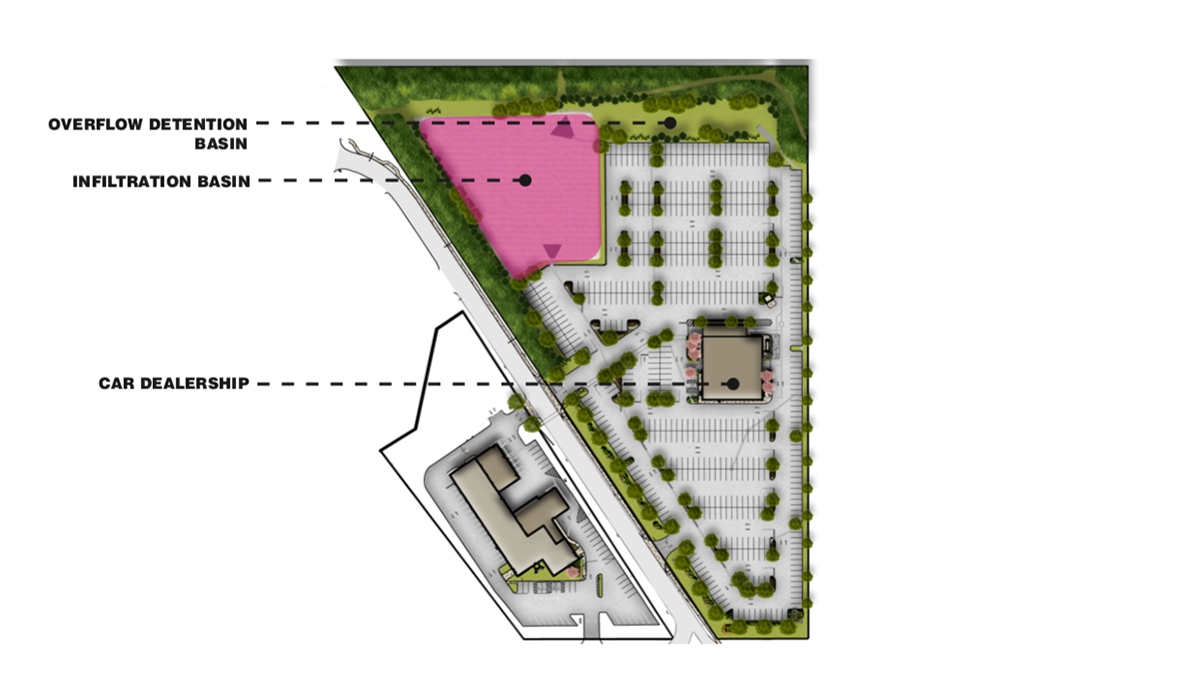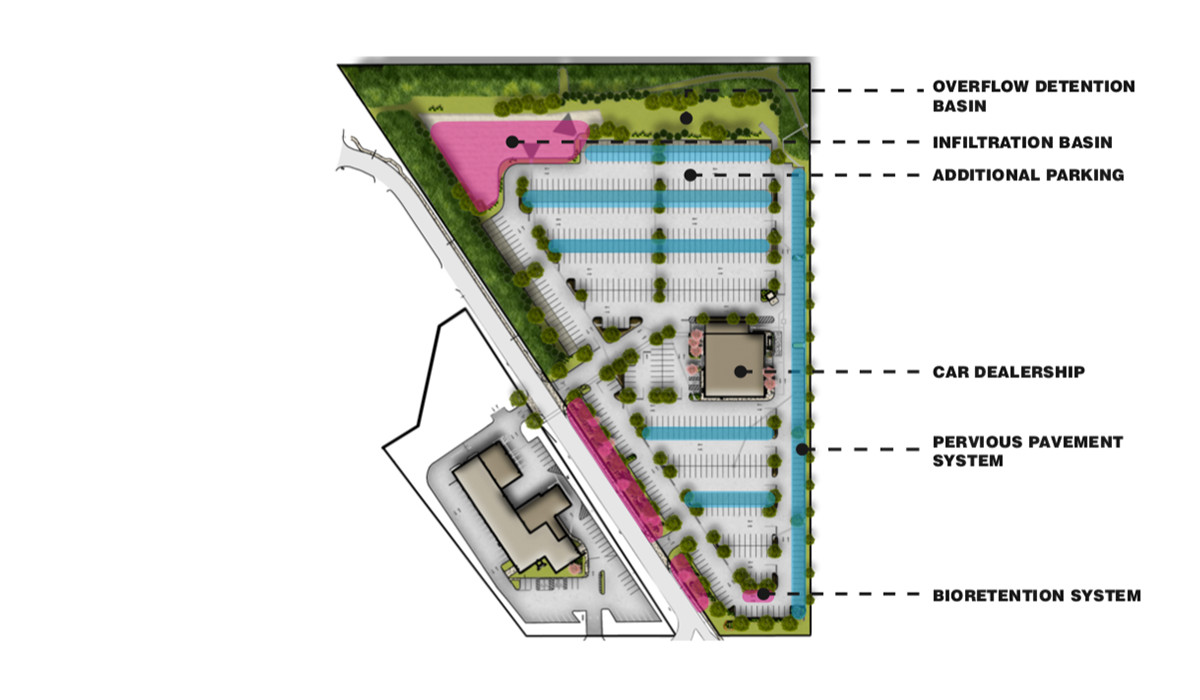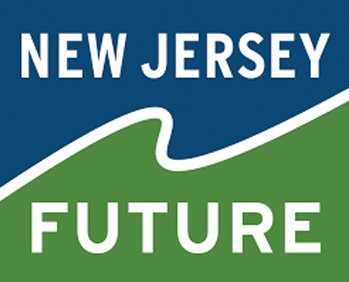Car Dealership
Before Rule Change:
This comparison shows a car dealership expansion project. The original car dealership was on the smaller parcel to the left, and the proposed expansion is located on the larger tract across the road to the right. The larger tract was an undeveloped, wooded property. The point of analysis is an existing storm sewer system in the adjacent roadway.
The pre-developed woodland conditions act to substantially limit the rate and volume of stormwater runoff leaving the site. Therefore, a significant stormwater management system was required to meet the recharge, water quality, and quantity requirements of the stormwater regulations effective prior to March 2021. To meet the requirements, a large, end-of-pipe infiltration basin with an attached detention basin area for quantity control during larger storm events was proposed as illustrated above.
After Rule Change:
This project is a good example of how to approach a development with a significant amount of proposed “motor vehicle surface area” as defined in the recently adopted stormwater management rules. The updated NJ Best Management Practices (BMP) Manual guidelines include provisions and procedures to “count” infiltration in the design and routing of the stormwater management facilities. The BMP Manual requires specific geotechnical exploration, soil testing, and groundwater mounding analysis in order to verify the extent to which infiltration can be counted. In this case, the soils and depth to seasonal high water table were favorable.
The rendering above shows that the land area required for the surface infiltration basin is greatly reduced. This expands the land area available for vehicle storage or for other site amenities. The project uses a combined approach of using decentralized green infrastructure, including porous pavement, bioretention systems, and grass swales, to meet the groundwater recharge and water quality requirements, and a smaller end-of-pipe infiltration basin to meet the remainder of the quantity control requirements. This approach shows how a decentralized green infrastructure approach can work to the property owner’s benefit, even in an intense development scenario. The site design leverages the green stormwater infrastructure to increase the project yield, which acts to offset additional costs associated with the implemented green infrastructure approach.


